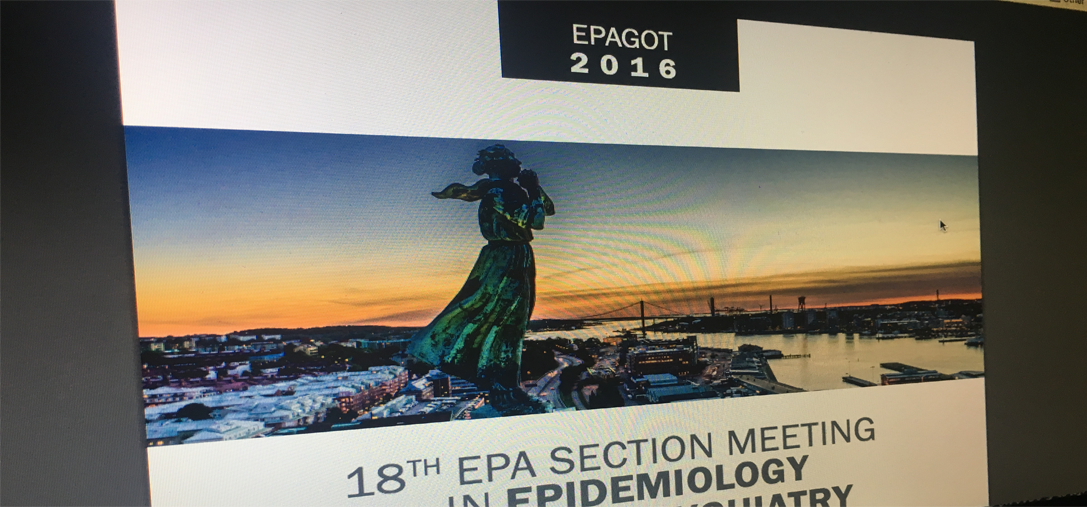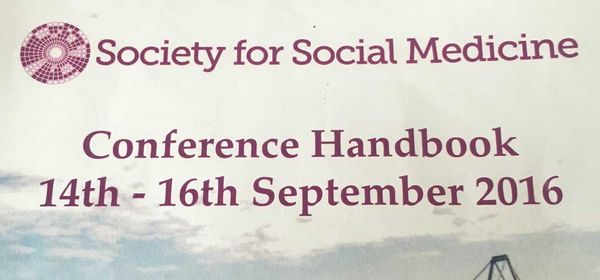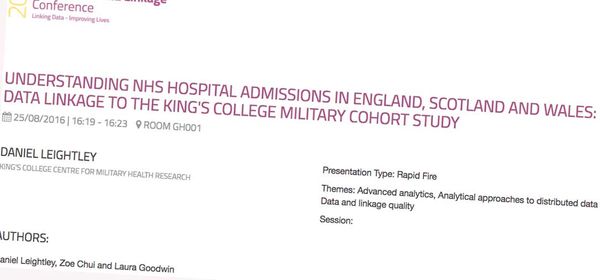European Psychiatric Association 18th meeting in Gothenburg
The European Psychiatric Association (EPA) Gothenburg 18th meeting of the Section of Epidemiology and Social Psychiatry aims to to provide a platform for psychiatric epidemiology and social psychiatry research from across the world. I submitted an abstract related to the use of Health Episode Statistics (HES) in epidemiology (more on this later).
This year EPA was held in Gothenburg, Sweden between November 30-December 3, 2016 at the Scandic Hotel Opalen, near the centre of Gothenburg.
We flew from London Gatwick on Tuesday 29th November in time for registration on Wednesday 30th. I was really excited to attend this conference, it is my first overseas conference with King's College London (KCL).
Day 1 - Wed 30 Nov
The conference started with registration in the early afternoon, after collecting the conference programme I was spoilt for choice with the wide range of presentations, posters and key note speeches over the next few days. I spent the first hour reviewing the talks of interest to me and getting to know the layout of the venue. The first session of the conference was the Conference Welcome, which was the general housekeeping and welcome messages etc. After the welcome, it was time to get things going with two keynotes.
The highlight was from Professor Matthew Hotopf, who is the director of the Biomedical Research Centre (BRC) at King's College London. Matthew focused on the research currently being undertaken at the BRC, importance of Big Data and Internet of Things. After the keynotes we were treated to a delightful coffee break, with a wide selection of cakes and pastries, possible one of the best coffee breaks I have had at a conference. After the coffee break it was time for the oral presentations which were split across 2 rooms and 12 talks. Key highlights session were:
- "Integrating mental health into primary care for post-conflict populations in Northern Sri Lanka (COMGAP-S)" by Doherty et al.
- "Trajectories of neighbourhood cohesion in childhood, and psychotic and depressive symptoms at age 13 and 18 years" by Solmi et al.
This concluded the first day of the conference, it was a great start with some very interesting keynotes and talks.
Day 2 - Thur 1 Dec
The second day of the conference started with keynote speeches in the main hall. The highlight was from Professor Nicola Fear, co-directory of the King's Centre for Military Health Research - my own department - who spoke about the research we currently undertake and our future research directory.
Prof Fear @ntfear presenting work from the @kcmhr #epagot2016 pic.twitter.com/50OQqMcOBm
— Dan (@_Dr_Daniel) December 1, 2016
Following on from the keynote talks we had 5 parallel sessions, and more than 25 talks. I tried to attend as many talks as I can, with the highlights of these talks being:
- "Investigating the health and social consequences of workplace bullying in Australia" by Butterworth et al.
- "Does low alcohol use increase the risk of sickness absence: A discordant twin study" by Østby et al.
- "Functional outcomes of child and adolescent mental disorders. Current disorder most important but psychiatric history matters as well" by Sluiter-Oerlemans et al.
After the parallel sessions we then had lunch which was authentically Swedish and very tasty followed by the poster session. It was then time for the after oral presentations, Professor Nicola Fear presented "Non-communicable diseases in the UK military and associations with alcohol use and mental health: A data linkage study" on behalf of Dr Laura Goodwin who was unable to attend the conference.
Prof Fear (@ntfear) presenting #esrc work led by @Laura_Goodwin_ at #epagot2016 @kcmhr pic.twitter.com/rC9hDzAuqh
— Dan (@_Dr_Daniel) December 1, 2016
After these parallel sessions it was time for another coffee break followed by the final parallel sessions of the day, with the highlights of these talks being:
- "Quality of life and self-rated health over time in people with diabetes: Findings from the English Longitudinal Study of Ageing" by Hackett et al.
- "Prognosis after self-harm in young adulthood- mental health and suicide" by Beckman et al.
- "Social support, potentially traumatic events, PTSD and disability pension" by Lassemo et al.
- "Social network influences and mental health care seeking" by Thériault et al.
This was the final session of a very busy day! It was a great day, with a lot of interesting talks and great discussions.
Day 3 - Fri 2 Dec
With day 3 brought more keynote and talks. It once again started with three keynote talks in the main hall. Each keynote was very interesting and thought provoking. After the keynote talks it was time for the parallel sessions to begin. I once again tried to visit as many talks as possible, the highlights of the first parallel session were:
- "Factors associated with suicidal thought and help seeking behaviour in transition aged youth versus adults" by Colman et al.
- "Childhood adversity and midlife suicidal ideation" by Stansfeld et al.
It was then time for lunch and for me to present my poster. The poster posed the question "Can we use Health Episode Statistics in epidemiological research?" The simple answer, YES, however there are caveats to using the data. The talk went very well and was very well received by the audience.
Our poster at #epagot2016 @Laura_Goodwin_ @kcmhr focusing on #HES #EHR for use in epidemiology pic.twitter.com/TjMUuOWeSV
— Dan (@_Dr_Daniel) November 30, 2016
The next parallel sessions included two talks, one related to the ESRC project which I work edon and one from a BRC colleague. The first talk was by Zoe Chui, who's talk was entitled "Using electronic hospital records to identify the most common accidents and injuries in the UK military: a data linkage study", which sought to identify the most common accident and injuries in the UK Armed Forces.
Zoe Chui presenting #ESRC funded research looking at Accident and Injuries in the U.K. Military @Laura_Goodwin_ @kcmhr #epagot2016 pic.twitter.com/Q3AnFtJsOv
— Dan (@_Dr_Daniel) December 2, 2016
This was then followed by Sarah Dorrington's talk entitled "UK studies of fit note use in practice: a systematic review of quantitative research 2010-2016" which was very insightful into the UK's use of the fit note.
This parallel session brought the conference to an end. Overall I found it a really interesting conference, with a new found respect and outlook for epidemiological research. As a computer scientist I walked away realising the contributes we can make to the field and the exciting new research possibilities.



